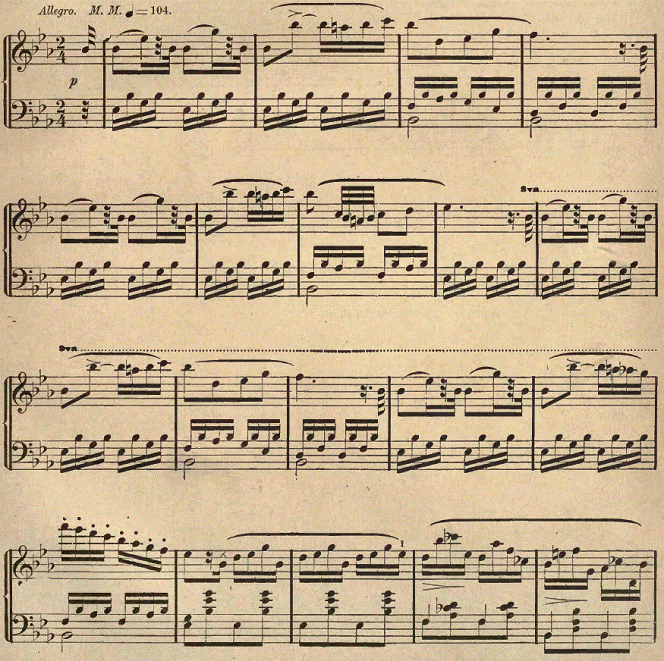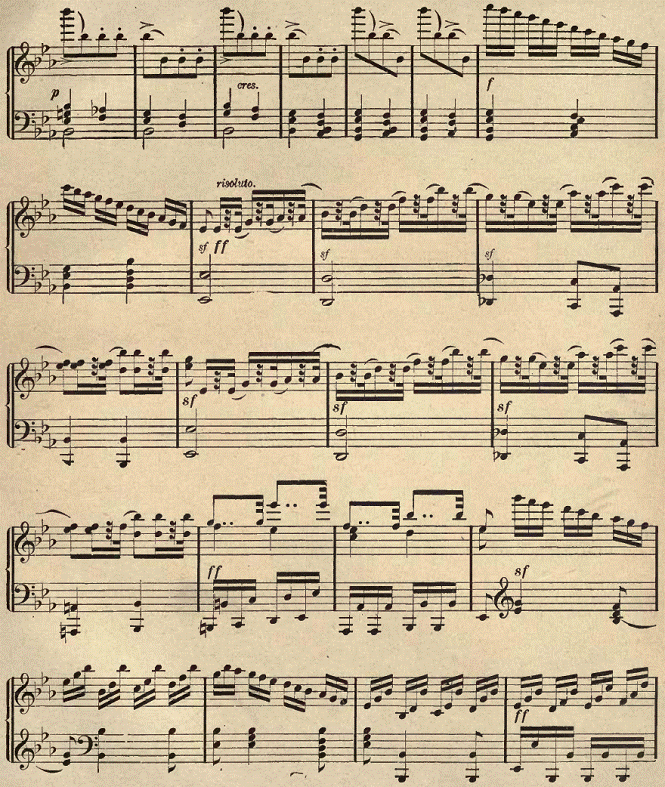Piano Metronome marking and Ignaz Moscheles
Ignaz Moscheles, the author of this composition, was born in Prague on the 30th of May, 1794, and died at Leipzieron the 10th of March, 1870. He was known and esteemed as pianist, teacher and composer.
He wrote much good music, though also many show pieces. As pianist he was even a successful rival of Hummel, while as teacher he was for many years active in connection with the Leipzig Conservatory, whither he was called by his former pupil, Mendelssohn. The following is merely a portion of the Rondo known under the title of ” Les Charms des Paris.”
Ignaz Moscheles and a metronome marking example
Observe the tempo mark at the beginning of this piece, Allegro M. M. – 104. This alludes to a musical time measure known as Maelzel’ s Metronome. It consists of a regular clock-work with an upright pendulum. On this a weight is so attached, that it may be moved up and down, to suit the figures indicated on the music. Thus : 50, means that the weight should be put to the figure 50 en the pendulum, and four should be counted to one stroke. 75, means, that the figure be moved to 75 and that two be counted to one motion of the pendulum. 104 means, that the pendulum weight should be put to 104, and one beat should be counted to each stroke of the pendulum.
The terms: Allegro, Andante, Adagio, etc., being too indefinite, the Metronome has been invented, by the means of which composers can fix the tempo with great precision.
Allegro by Ignaz Moscheles




Notice also the triplets in the 24th, 25th, 26th and 27th measures which are played to notes of even divisions in the left hand. Learn to play each hand independently and rapidly and then you will have no trouble in putting both parts together.
The same applies to the 4th, 5th, 6th and 7th measures from the close.



